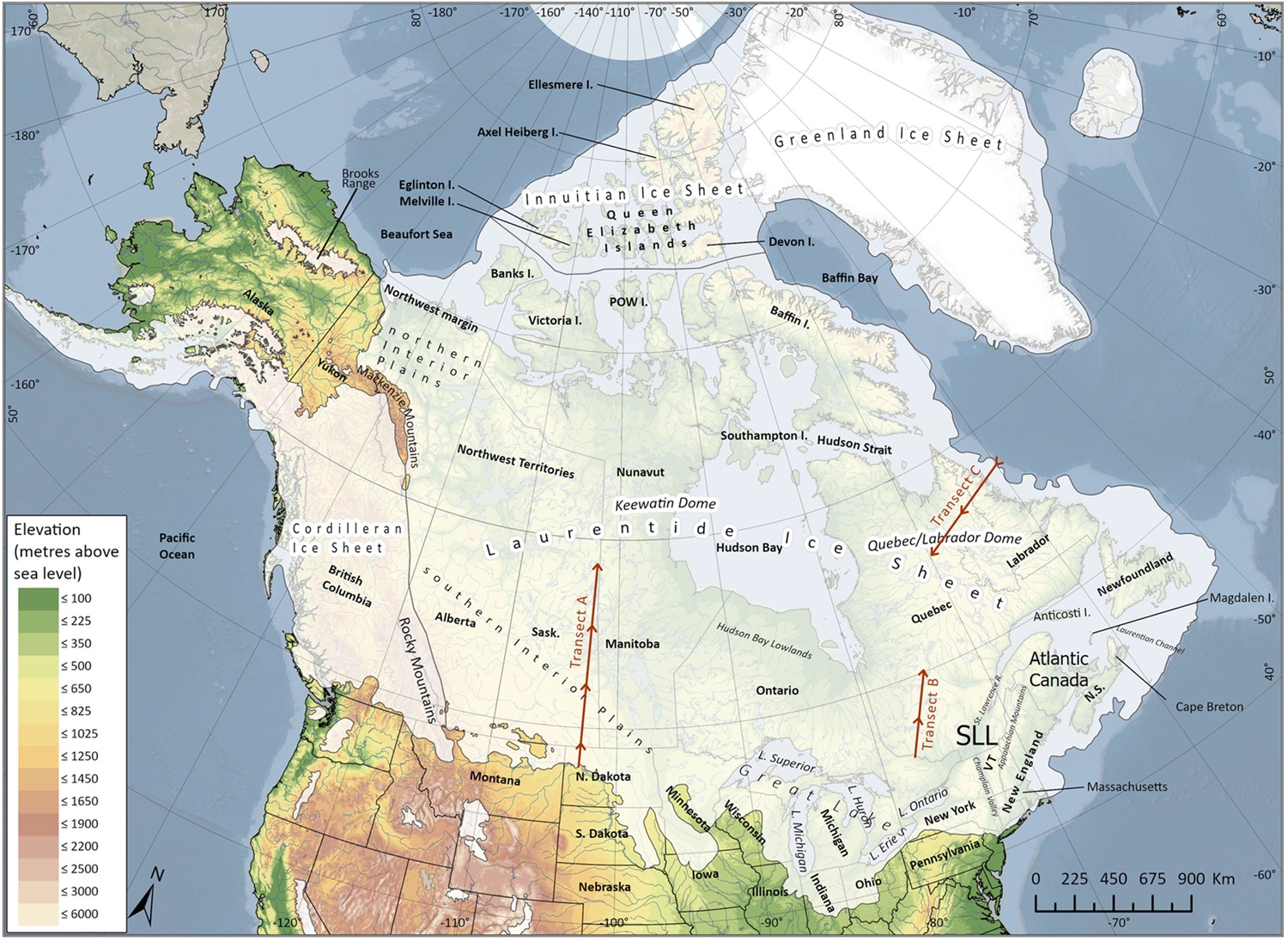The Champlain Sea is a body of saline to brackish water 55,000 km2 that occupied the depressed land of the St. Lawrence Lowland between Quebec City and Brockville, Ontario, and extended up the Ottawa River Valley during the late glacial period 12,000 to 10,000 years ago (see Glaciation). The name was first used by American geologist C.H. Hitchcock in 1906.
Geological History
The relative rise of sea level about 12,800 years ago was as much the result of the depression of the land under the weight of glacial ice as of the rise of water level caused by meltwater released from the waning glacier.
The Champlain Sea was cold initially, but studies of its invertebrate fauna indicate that its temperature rose. Its maximum depth, in the centre of the basin, must have been about 200 m. Salinity values (10 to 30 parts per thousand) and temperatures (-1° to 8° C) were similar to those of James Bay at present. The sea lasted some 2000 years when the water became too fresh to accommodate marine organisms. The ancient shorelines of the Champlain Sea are now over 200 m above sea level north of the St. Lawrence and 150-190 m above sea level to the south of the lowlands due to differential postglacial isostatic uplift. The most abundant sediments deposited by the sea, the Leda marine clays, are mainly rock "flour" from glacial abrasion. Their mineralogy principally reflects the composition of the Precambrian rocks from which they are derived, i.e., they contain quartz, amphiboles and pyroxenes (see Geological Regions). They are classed as "sensitive soils" because the incorporated sea salt has dissolved, leaving voids that can cause the sediment to contain more water than its usual "liquid limit." Thus, when disturbed after much snowmelt or rainfall, particularly when triggered by earthquakes, heavy traffic or construction, the clays become fluid, and landslides result. Many landslides and earthflows have occurred in the clays, sometimes with loss of life and considerable material damage (Saint-Maurice Valley, 1663; Saint-Alban, 1894; Nicolet, 1955).
The Champlain Sea area has gradually become an erosional environment. When properly drained, its marine clays constitute the best agricultural land in Quebec.

 Share on Facebook
Share on Facebook Share on X
Share on X Share by Email
Share by Email Share on Google Classroom
Share on Google Classroom



